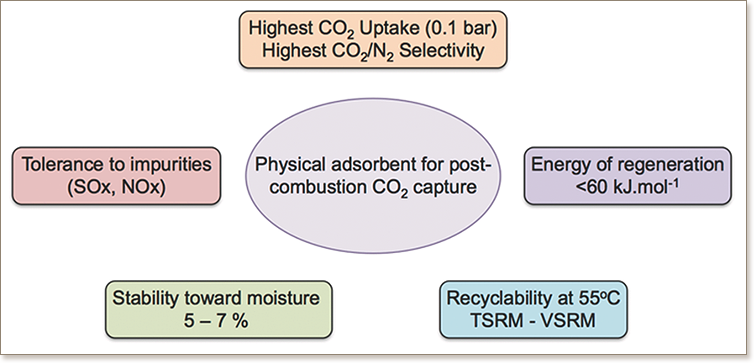


The development of practical solutions for the energy-efficient capture of carbon dioxide is of prime importance and continues to attract intensive research interest. Conceivably, the implementation of adsorption-based processes using different cycling modes, e.g., pressure-swing adsorption or temperature-swing adsorption, offers great prospects to address this challenge. Practically, the successful deployment of practical adsorption-based technologies depends on the development of made-to-order adsorbents expressing mutually two compulsory requisites: i) high selectivity/affinity for CO2 and ii) excellent chemical stability in the presence of impurities. This study presents a new comprehensive experimental protocol apposite for assessing the prospects of a given physical adsorbent for carbon capture under flue gas stream conditions. The protocol permits: i) the baseline performance of commercial adsorbents such as zeolite 13X, activated carbon versus liquid amine scrubbing to be ascertained, and ii) a standardized evaluation of the best reported metal-organic framework (MOF) materials for carbon dioxide capture from flue gas to be undertaken. This extensive study corroborates the exceptional CO2 capture performance of the recently isolated second-generation fluorinated MOF material, NbOFFIVE-1-Ni, concomitant with an impressive chemical stability and a low energy for regeneration. Essentially, the NbOFFIVE-1-Ni adsorbent presents the best compromise by satisfying all the required metrics for efficient CO2 scrubbing.